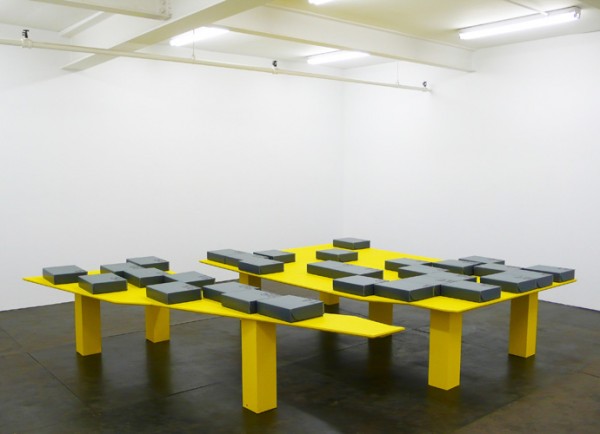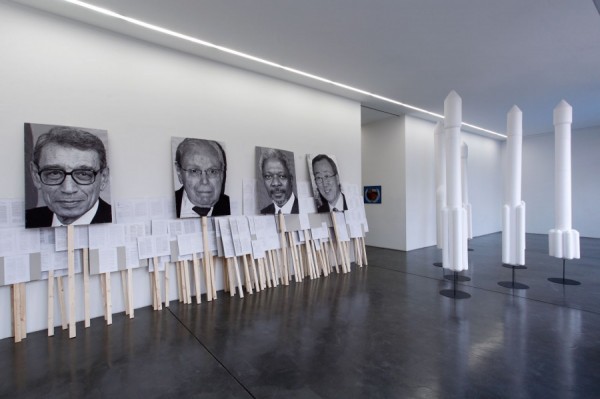Christian Philipp Müller
Tuesday, 10 June 2014



Work from his oeuvre.
“When Charles Ephrussi received A Bunch of Asparagus painted by Édouard Manet in 1880, he paid Manet 200 francs more than the 800 francs originally agreed upon — apparently because he was so pleased with the result. Pleased in turn by the unexpected increase in his fee, Manet sent his patron an additional painting of a single stalk of asparagus and noted that this stalk had been missing from the original bundle. As Carol Armstrong writes in her essay “Counter, Mirror, Maid: Some Infra-thin Notes on A Bar at the Folies-Bergère,” what the painter meant is that this small painting would make up the difference and that Ephrussi thus had now received the appropriate amount of asparagus for the amount he had paid.1
Through this “illusionistic substitution” (Armstrong) of painted asparagus for edible asparagus, Manet brought into play an “exchange value” associated with both the form of production and consumption.2 According to Armstrong, however, the insinuated “relative price of vegetables and paintings” raises fundamental questions, namely, whether an illusionary painted bundle of asparagus has a value “unto itself” or whether — relative to the valuation of the “real” bunch of asparagus — it is a matter of a “countable or weighable” articles whose value is produced by the luxuriousness of the represented object and the quality of the color application.3 Thus, Manet’s system of equivalences and substitutions did not aim to create a basis of comparison between reality and illusion, although it did set up analogies between the two on the level of taste, value, and exchange. The material value of an individual stalk of asparagus — determined by the purchase price — only increased through the symbolic relativation of the represented subject.
Over one hundred years later, the bunch of asparagus would become the object of another reflection on the processes of valuation at Hans Haacke’s Manet-Projekt in the exhibition Projekt 74. — Kunst bleibt Kunst which took place in the Wallraf-Richartz-Museum in Cologne on the occasion of the museum’s 150th birthday. On ten panels, Haacke documented the chronological history of collectors who had owned the Bunch of Asparagus, which had been in the museum’s possession since 1967. Each panel showed an owner and included personal information about each one. Thus, we learn that the painter Max Liebermann, barred from working in 1933 due to his Jewish heritage, had owned the still life. Other owners included Hermann J. Abs, Chairman of the purchasing committee of the Wallraf-Richartz-Museum, who was also the Chairman of the Deutsche Bank.
Through a simple, uncommented listing of dates and facts, Haacke aimed to make visible historical relationships that had been absent in history books. In order to prevent any possible references to the Nazi past of Abs, who had held a leading position in the economic politics of the Third Reich, the directorship of the museum instructed the exhibition curators to remove Haacke’s work from the show” – Sabeth Buchmann, Signs in Abundance